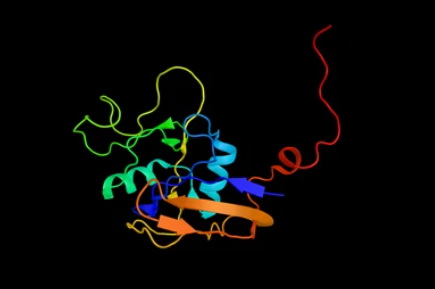Hyaluronan (HA) binding Proteins
Related Symbol Search List
Immunology Background
About Hyaluronan (HA)-binding Proteins
Hyaluronan (HA)-binding proteins are a group of proteins that specifically bind to hyaluronan, a large, negatively charged polysaccharide found in the extracellular matrix of tissues. HA is involved in various biological processes, including cell migration, tissue development, and inflammation.
HA-binding proteins have diverse functions and are found in various tissues and cell types. They can be divided into several families based on their structural and functional properties. Some of the well-known families of HA-binding proteins include hyaladherins, hyaluronidases, CD44 receptors, and link proteins.
- Hyaladherins are a family of proteins that contain an HA-binding domain, allowing them to interact with HA directly. These proteins often act as mediators of HA-dependent cell adhesion and migration. Examples of hyaladherins include tumor-associated antigens RHAMM, versican, and aggrecan.
- Hyaluronidases, on the other hand, are enzymes that degrade and cleave HA. They have a unique ability to break down the HA polymer into smaller fragments, which can stimulate various cellular responses such as inflammation and tissue remodeling. Hyaluronidases are widely expressed in various tissues and cell types, and they play a crucial role in the turnover of HA in the extracellular matrix.
- CD44 is a cell surface receptor that binds to HA and is involved in cell adhesion, migration, and signal transduction. It is expressed in various cell types, including immune cells, stem cells, and cancer cells. CD44 binding to HA can regulate cell behavior and modulate various cellular processes.
- Link proteins are a family of proteins that facilitate the interaction between HA and other extracellular matrix components, such as proteoglycans and collagen fibers. These proteins play a crucial role in stabilizing the structure and organization of the extracellular matrix.
Overall, HA-binding proteins are important players in the regulation of HA-dependent cellular functions. Their interactions with HA contribute to various physiological and pathological processes in the body.

Physiological Functions of Hyaluronan (HA)-binding Proteins
Hyaluronan (HA)-binding proteins, also known as hyaladherins or hyaluronan receptors, are a group of proteins that interact with the polysaccharide hyaluronan in the extracellular matrix and on the cell surface. These proteins play diverse physiological roles in various tissues and contribute to numerous biological processes. Here are some of the key physiological functions of HA-binding proteins:
Cell Adhesion and Migration: HA-binding proteins facilitate cell adhesion and migration by interacting with hyaluronan. They serve as receptors for hyaluronan, mediating cell-ECM adhesion and promoting cell migration. These interactions are crucial during processes such as embryonic development, wound healing, tissue repair, and immune cell trafficking.
Tissue Remodeling and Matrix Organization: HA-binding proteins participate in tissue remodeling and matrix organization. They can influence the assembly and organization of the extracellular matrix by interacting with hyaluronan and other ECM components. These interactions contribute to tissue architecture, mechanical properties, and remodeling processes such as tissue repair and organ development.
Inflammation and Immune Responses: HA-binding proteins modulate inflammation and immune responses. They can be involved in leukocyte recruitment and activation by interacting with hyaluronan. These interactions facilitate the migration of immune cells to sites of inflammation and regulate their activation and function. HA-binding proteins also participate in the regulation of cytokine production and the modulation of immune cell behavior.
Cell Signaling and Receptor Cross-Talk: HA-binding proteins can influence cell signaling and receptor cross-talk. They can transduce intracellular signals upon binding to hyaluronan. HA-binding proteins can activate downstream signaling pathways, leading to diverse cellular responses, including cell proliferation, survival, and differentiation. Additionally, they can interact with other cell surface receptors and modulate their signaling activities.
Wound Healing and Tissue Repair: HA-binding proteins play a role in wound healing and tissue repair processes. They are involved in the regulation of cell migration, proliferation, and matrix deposition during tissue regeneration. HA-binding proteins can promote the recruitment of fibroblasts and immune cells to the wound site, facilitate ECM deposition, and contribute to the formation of granulation tissue.
Cell-Cell and Cell-ECM Interactions: HA-binding proteins mediate cell-cell and cell-ECM interactions. Through their interaction with hyaluronan and other ECM components, these proteins contribute to the assembly and stability of cell-cell and cell-ECM adhesions. They can facilitate the formation of cell-matrix contacts, such as focal adhesions, and participate in cell-cell adhesion structures, such as the formation of cell junctions.
Regulation of Tissue Homeostasis: HA-binding proteins are involved in the regulation of tissue homeostasis. They can modulate cell behavior, including proliferation, survival, and differentiation, by interacting with hyaluronan. The interactions between HA-binding proteins and hyaluronan contribute to the maintenance of proper tissue architecture, ECM composition, and cellular functions.
These physiological functions highlight the importance of HA-binding proteins in various biological processes, including cell adhesion, migration, tissue remodeling, immune responses, and wound healing. The interactions between HA-binding proteins and hyaluronan contribute to the dynamic regulation of cellular behaviors and tissue homeostasis.
Available Resources for Hyaluronan (HA)-binding Proteins
Creative BioMart provides a wide array of specialized products and services to assist in the exploration of hyaluronan (HA)--binding proteins. Our diverse range encompasses recombinant proteins, cell and tissue lysates, pre-coupled protein beads, antibodies, and more, all geared toward uncovering the mechanisms governing their functions.
Moreover, we offer comprehensive resource support, encompassing associated pathways, protein functionalities, interacting proteins, related research fields, pertinent articles, and other relevant materials about hyaluronan (HA)-binding proteins. This all-inclusive provision is designed to enrich the understanding and investigation of the functions and regulatory mechanisms of these pivotal molecules.
Explore the wealth of resources associated with hyaluronan (HA)--binding proteins below.
We are committed to delivering top-tier research tools and services to support your quest for successful scientific outcomes. For any further inquiries or bespoke services, please don't hesitate to reach out to us at your convenience.

